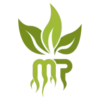Rainbow chard, also known as Swiss chard, is a variety of chard that originated in the Mediterranean region. The "rainbow" variety refers to a mix of chard plants with stems of different colors, including red, yellow, pink, orange, and white.
Harvest rainbow chard by cutting the outer leaves at the base, leaving the inner leaves and growing point intact. Regular harvesting encourages the plant to continue producing new leaves. Remove any yellowing or damaged leaves to maintain plant health.
Harvest rainbow chard leaves when they are young and tender for the best flavor. The leaves can be harvested at any size, but smaller leaves tend to be more tender and milder in taste. For a continuous harvest, pick the outer leaves and allow the center to keep growing.
General Prevention: To prevent pest infestations, maintain good garden hygiene, rotate crops, and ensure proper spacing for air circulation. Water at the base of the plants to avoid wetting the leaves, which can help prevent fungal diseases.
